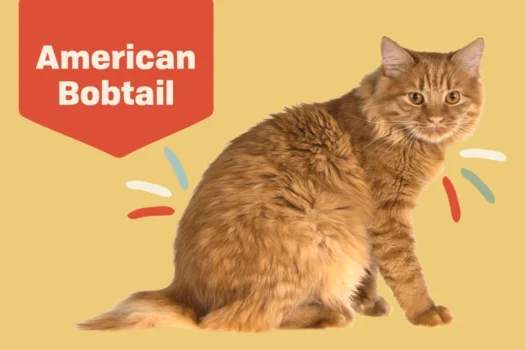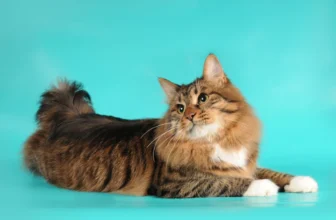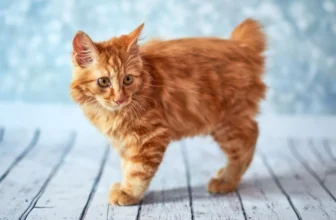Introduction
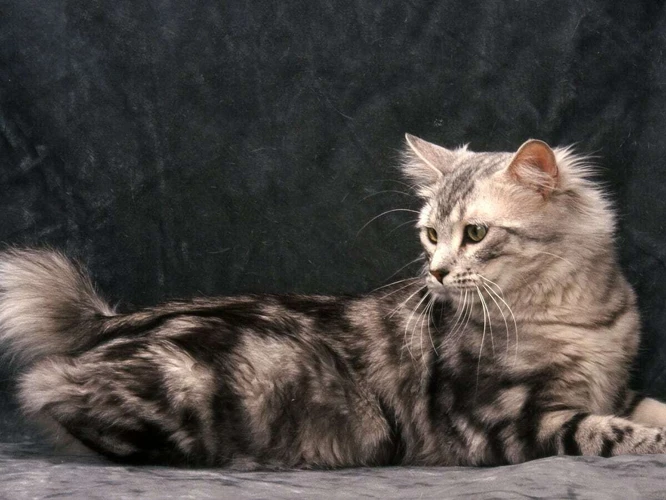
Our feline friends are known for their captivating eyes, and the American Bobtail is no exception. Their eyes are not only striking but also hold unique genetic traits that make them one-of-a-kind. There’s a lot to know and appreciate about these eyes, from their various colors to their shape and expression. In this article, we’ll explore the genetics behind American Bobtail eyes, their different colors, and what makes them so special. We’ll also cover tips for keeping their eyes healthy and detecting any common problems. So, let’s dive in and learn more about the mesmerizing eyes of American Bobtails.
What are American Bobtails?
American Bobtails are a unique breed of cats that are easily identifiable by their distinctively short tails. These cats were first seen in the late 1960s, in Arizona, when a couple found a litter of kittens with bobbed tails. This breed soon gained popularity and recognition for its distinctive physical traits, muscular build, powerful legs, and unique coat patterns. American Bobtails are a medium to large cat breed, with males weighing up to 16 pounds and females weighing up to 12 pounds, reflecting their muscular build.
These cats are characterized by their strong resemblance to bobcats, with their adorable round faces and tufted ears. They come in a variety of colors and patterns, from solid colors such as black, white, and orange, to unique coat patterns such as tabby, tortoiseshell, and calico. American Bobtails are also well-known for their polydactyl paws, that is, having more than five toes on their paws, a trait that is believed to have originated from their natural adaptation to the tough terrains of the American wilderness.
Their short tails, unlike any other cat breed, are unique to American Bobtails. The length of the tail usually ranges between one to four inches, but it can sometimes be longer in some cats. Their tails are also flexible and can be moved in various directions, which is another unique aspect of the breed.
American Bobtails are a healthy breed that is relatively easy to take care of, given their low maintenance coat. However, caring for their distinctive eyes is an essential part of keeping them healthy.
The Genetics Behind Those Eyes

Have you ever wondered what causes American Bobtails’ striking, colorful eyes? Well, the answer lies in their genetics! The captivating eyes of American Bobtails are yet another unique feature of this breed. The science behind their eye color is something that every cat lover should know to fully appreciate the beauty of these felines. Let’s explore the fascinating genetics behind their eyes together. And if you want to know more about other distinctive features of American Bobtails, you can check out our articles on their muscular build, unique coat patterns, or polydactyl paws!
What determines the color of an American Bobtail’s eyes?
The color of an American Bobtail’s eyes is determined by genetics. The genes responsible for eye color are linked to the amount and type of pigment in the iris. The iris is the part of the eye that controls the amount of light that enters the pupil. It is formed by two layers: the front layer, or stroma, which contains pigment cells and gives the eye its color, and the back layer, or epithelium, which is black and prevents light from scattering inside the eye.
The primary pigment responsible for eye color is melanin. Melanin is a dark pigment that is produced by cells called melanocytes. It is responsible for the brown and black colors in eyes, as well as in skin and hair. However, there are other pigments that contribute to eye color, such as lipochrome, which produces yellow and green colors.
The amount and type of pigment in the iris vary depending on the cat’s genes. For example, a cat with two dominant brown eye genes will have brown eyes, while a cat with two recessive blue eye genes will have blue eyes. Some cat breeds, such as Siamese cats, have a genetic mutation that causes their eyes to become blue at a certain temperature, due to the production of temperature-sensitive melanin.
It is also possible for American Bobtails to have heterochromia, which means that each eye is a different color. Heterochromia can be genetic or due to injury or disease. The combination of these factors leads to the unique eye colors that American Bobtails have.
Understanding the genetics behind eye color in American Bobtails is important for breeders who want to produce cats with specific eye colors. It is also important for cat owners to know about their cat’s eye color, as it can be an indicator of certain health problems. For more information on the health of American Bobtails, check out our article on Body Shape and Health.
The role of genetics in heterochromia
Heterochromia iridis is a condition where an animal’s eyes are different in color. This eye condition is often seen in many different cat breeds, including American Bobtails. The cause of heterochromia in American Bobtails is rooted in genetics.
There are two types of heterochromia: complete heterochromia and partial heterochromia. Complete heterochromia is a condition where one eye is a different color than the other eye. Partial heterochromia, on the other hand, occurs when different parts of the same eye are different colors.
The role of genetics in heterochromia
The development of heterochromia is influenced by genetics. Specifically, this eye condition is linked to genes that regulate pigmentation. To understand how heterochromia works, it’s important to know a little bit about the genetics of eye color.
Eye color is determined by the amount and type of pigments in the iris. The two primary pigments that determine eye color are melanin and lipochrome. Melanin is a dark pigment that gives eyes shades of brown or black, while lipochrome is a yellow pigment that gives eyes shades of green, hazel or blue.
The genes that control eye color are complex and involve multiple genetic loci. While we used to think that eye color was determined by just one or two genes, we now know that at least 16 different genes can contribute to the variations we see.
For example, the OCA2 (oculocutaneous albinism II) gene has been found to have the largest effect on eye color in humans. Other genes, such as HERC2, TYR, and SLC24A4, have also been linked to eye color.
Role of genetics in American Bobtails’ heterochromia
In American Bobtails, heterochromia is often caused by a genetic mutation that affects the distribution of pigments in the iris. Specifically, the mutation affects the pigment-producing cells called melanocytes. When these cells don’t distribute pigments evenly during development, one eye can end up with a different color than the other.
While heterochromia is more commonly seen in white or piebald cats, it can occur in cats of any color. It’s also important to note that while heterochromia may be present in American Bobtails, it doesn’t affect their vision or health in any way.
To learn about other unique features of American Bobtails, such as their short tails and powerful legs, check out our article on American Bobtails’ short tails and powerful legs.
The Color Spectrum of American Bobtail Eyes

American bobtails come in all shapes, sizes, and colors. Their fur alone can make them a fun, expressive addition to any home. However, one part of their appearance that often goes overlooked is their eyes. It might seem like their eyes are just solid colors, but upon closer inspection, you’ll notice a remarkable spectrum of shades and pigmentation. Let’s take a closer look at the unique color spectrum of American Bobtail eyes and explore what makes them so special.
The Spectrum of Blue and Green Eyes
American Bobtail cats can have a dazzling array of eye colors, including blue and green. Blue eyes are relatively common, with many Bobtails sporting piercing baby blues. Blue eyes in cats are the result of a lack of pigmentation in the iris. In fact, all blue-eyed cats have blue irises, regardless of breed.
Green eyes are also a common eye color in American Bobtails. Green eyes get their unique color from a small amount of yellow pigment called lipochrome, which mixes with the blue that is already present in the iris. This combination results in lush, verdant hues that are truly mesmerizing.
It’s important to note that not all green eyes are the same shade. In fact, there is a wide spectrum of green eye colors unique to American Bobtail cats. From bright chartreuse to deep, mossy green, there are countless variations in the color of a Bobtail’s eyes.
Additionally, some American Bobtail cats have eyes that transition from blue to green, showcasing a unique blend of colors that is sure to leave you stunned. These are known as hazel eyes.
Regardless of the exact hue, the unique combination of green, yellow, and blue in American Bobtail eyes is truly striking. Make sure to highlight your Bobtail’s captivating gaze by placing it in areas with plenty of natural light, which will help bring out the bright colors of their eyes.
The Mysteries of Odd-Eyed Bobtails
Have you ever seen an American Bobtail with one blue eye and one gold eye? This is called ‘odd-eyes’ or heterochromia. It is a genetic condition that can occur in any cat breed, but it is particularly striking in American Bobtails. The reason for this is simple – the contrasting colors of the eyes against the cat’s coat are especially striking.
But what is the science behind odd-eyed Bobtails?
Odd-eyed Bobtails result from a gene mutation that affects the distribution of pigment in the iris. The mutation also causes the eyes to have different levels of melanin, which is responsible for the color of the eyes. The melanin can be unevenly distributed, resulting in one blue eye and one gold eye. This mutation happens randomly and cannot be bred specifically.
In some cultures, odd-eyed cats are considered to be lucky, while in others, they are believed to be a harbinger of bad luck. This association with luck only adds to the mystery and uniqueness of odd-eyed Bobtails.
Why Are Odd-Eyed Bobtails So Mysterious?
Despite the scientific explanation of heterochromia, the allure of odd-eyed Bobtails remains a mystery. The juxtaposition of two contrasting colors in one cat’s eyes is captivating and almost magical.
Some believe that odd-eyed Bobtails have unusual powers, and there are even stories and legends associated with them. This adds to the mystery and fascination of these cats.
But, one thing is clear – odd-eyed Bobtails are beautiful, unique, and have captured many cat lover’s hearts. Their enigmatic and captivating appearance is just one of the many reasons why American Bobtails are so beloved.
What Makes American Bobtails’ Eyes So Unique?
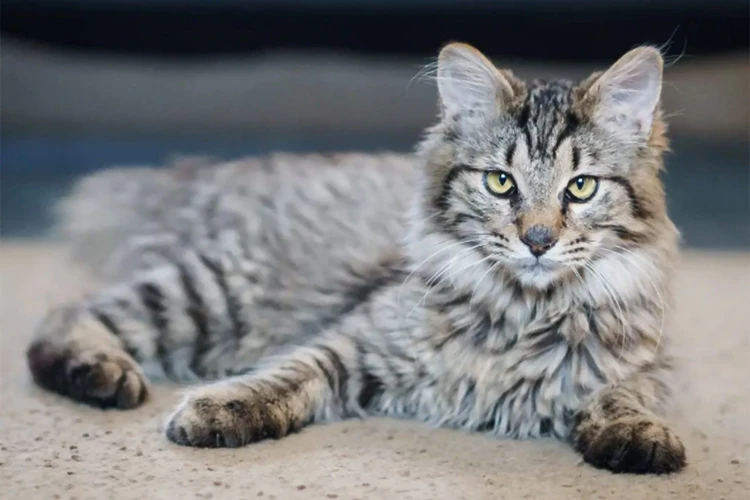
Have you ever gazed into the eyes of an American Bobtail and wondered what makes them so unique? Their eyes have a quality that is mesmerizing and captivating. There are several factors that contribute to their distinctive traits, from the shape of their eyes to the way they communicate. Let’s dive deeper and explore the fascinating world of American Bobtail eyes.
The Importance of Eye Shape
The shape of American Bobtails’ eyes is a defining feature of their breed, and it is important to note how it contributes to their unique appearance. The shape of their eyes is almond-like, with a slight upward tilt at the outer corner, giving them an alert and mischievous expression. In fact, the breed standard for American Bobtails states that their eyes should be “large, rounded, and wide-set.”
This eye shape is not just aesthetically pleasing, but it also serves a functional purpose. The almond shape allows for a wider field of vision, helping American Bobtails to better detect movement and prey. Additionally, the upward tilt of their eyes helps protect their eyes from the sun’s glare during daylight hours.
It is essential for pet owners to pay attention to their cat’s eye shape and size because any changes in these factors could indicate a health issue. A sudden change in the shape or size of an American Bobtail’s eyes could be a sign of an injury, infection, or an underlying medical condition. It is imperative to monitor your cat’s eyes at all times.
The unique shape of American Bobtails’ eyes is a crucial feature of their breed standard, adding to their distinctive and appealing appearance. Not only that, but the shape serves a practical purpose in helping these cats navigate their environment. By keeping an eye on your American Bobtail’s eyes, you can ensure that they are healthy, alert, and happy.
Unquely expressive eyes
American Bobtails are famous for their striking and unique eyes. They possess a characteristic eye shape that is slightly upwardly slanted, giving them a wild and expressive appearance. These eyes are widely regarded as one of the defining features of the breed, and they are incredibly expressive, reflecting the cat’s emotions and mood.
One of the most remarkable things about American Bobtail’s eyes is their range of expression, which is wider than that of many other breeds. Their eyes can display surprise, happiness, confusion, and even anger or resentment. They can communicate their feelings through their eyes, and they can produce a wide array of different expressions that give them an almost human-like quality.
Their large size and special shape also give American Bobtails eyes unparalleled three-dimensionality. They are round and protruding, which makes them look more alive and deep-set. The unique shape enhances their ability to display a wide range of emotions and communicate with their human counterparts.
American Bobtail eyes tend to come in a wide variety of colors, from deep gold to vibrant blue, and the expressiveness of the eyes combined with different colors leads to a unique look for each cat. And while heterochromia (having two different colored eyes) is relatively rare in this breed, it only adds to their characteristically expressive appearance.
All these features make American Bobtails’ eyes so distinctive and fascinating. They are more than just organs for vision– their eyes convey an array of moods and emotions that make them a unique breed. Strongly bonded with their owners, American Bobtails express so much love and affection through their eyes, which indeed is an extraordinary experience for any cat parent.
Caring for American Bobtail Eyes
Taking care of your American Bobtail’s eyes is an essential part of keeping your furry friend healthy and happy. With their striking eyes being one of their defining features, it’s important to make sure they are well-maintained. However, it can be perplexing for new cat owners to know the best way to care for their pet’s eyes, especially since cats are known for being quite stoic and may not always show signs of discomfort when they are suffering from an eye problem. But fear not, by following some simple tips and being alert to warning signs, you can ensure that your American Bobtail’s eyes remain bright and healthy. Let’s explore what you need to know about caring for American Bobtail eyes.
Common Eye Problems to Watch For
It’s important to keep an eye on your American Bobtail’s eyes and watch for any signs of issues. Here are some of the most common eye problems to look out for:
| Eye Problem | Symptoms | Treatment |
|---|---|---|
| Conjunctivitis | Redness, discharge, swelling, and possible squinting in one or both eyes. | Antibiotics, anti-inflammatory medication, and cleaning the eye area. |
| Corneal Ulcers | Excessive blinking, squinting, discharge, and cloudiness in one or both eyes. | Antibiotics, anti-inflammatory medication, and sometimes surgery. |
| Cataracts | Cloudiness or a whitish appearance in one or both eyes, along with potential difficulty in seeing. | Surgery is typically the only option. |
| Glaucoma | Cloudiness, squinting, enlarged pupils, and often redness. | Medications to reduce eye pressure or surgery in cases where medication doesn’t work. |
| Third Eyelid | Visible membranes in one or both eyes, which are noticeable when your cat is sick or sleeping. | Treatment depends on the underlying cause; speak to your vet. |
If you notice any of these symptoms or if you believe something is off with your American Bobtail’s eyes, it is essential to contact your veterinarian promptly. Remember that early detection and treatment are key to maintaining your cat’s eye health.
Tips for Keeping Your Cat’s Eyes Healthy
Ensuring the overall health of your American Bobtail cat’s eyes is an important part of taking care of their well-being. Here are some tips for keeping your cat’s eyes healthy:
| Tip | Description |
|---|---|
| Regular Check-Ups | Take your American Bobtail cat for regular veterinary check-ups at least once a year. During the check-up, the veterinarian can examine your cat’s eyes and detect any developing problems. |
| Cleanliness | Wipe the corners of your cat’s eyes daily with a moist, warm cloth to remove any discharge or debris that may be building up. This helps prevent infections and keeps your cat’s eyes clear. |
| Nutrition | Provide your American Bobtail cat with a healthy and balanced diet that is rich in essential nutrients and vitamins. This helps to maintain healthy eyes and a strong immune system, which can prevent eye disorders. |
| Avoid Irritants | Avoid using harsh chemicals, soaps, or shampoos near your American Bobtail’s eyes as they may cause irritation. If you need to clean your cat’s face, use only lukewarm water. |
| Sun Protection | Exposure to sunlight can cause eye problems in American Bobtail cats. Keeping them indoors and away from direct sunlight or using protective sunglasses can prevent eye damage. |
| Watch for Signs of Trouble | Observe your cat’s eyes for any changes in color, discharge, cloudiness, or excessive tearing. If you notice anything unusual, contact your veterinarian immediately as it may be a sign of an underlying problem. |
By following these tips, you can ensure that your American Bobtail cat’s eyes remain healthy and free from any major problems. However, it is always important to seek professional veterinary advice if you notice anything unusual or concerning about your cat’s eyes.
Conclusion
As we come to the end of our journey exploring the mesmerizing eyes of American Bobtails, we can’t help but feel a sense of awe and wonder. These unique feline companions have captivated us with their striking gaze and individual personalities. Our investigation has given us a peek into the genetic makeup behind their eye color, the mysteries of heterochromia, and the importance of eye shape. But more than that, it has given us a glimpse into the world of these fascinating creatures and their care. Let’s wrap things up with some final thoughts on what we’ve learned.
Final Thoughts
As you can see, American Bobtails are a unique and fascinating breed of cat, with eyes that can be just as striking as their physical features. From their eye shape to the mysteries of odd-eyed Bobtails, there is so much to learn and appreciate about this breed’s eyes.
Keep in mind that caring for your American Bobtail’s eyes is also crucial for their overall health and well-being. Staying vigilant for common eye problems and following tips for maintaining healthy eyes should always be a top priority.
Remember that the vibrancy and expression in your American Bobtail’s eyes is a testament to their personality and unique individuality. Treat their eyes with care and respect, and they will continue to shine bright and bring joy to your life.
The eyes of American Bobtails are both fascinating and captivating, reflecting the beauty and complexity of this wonderful feline breed. By learning more about their eyes and how to care for them, you can deepen your appreciation for this amazing breed and provide your cat with the love and care they deserve.
Frequently Asked Questions
1. Can American Bobtails have different colored eyes?
Yes, American Bobtails can have eyes of different colors, a condition known as heterochromia.
2. Do American Bobtails have a specific eye shape?
American Bobtails can have almond-shaped or round-shaped eyes, but what makes them unique is the expressive look in their eyes.
3. Are American Bobtail eyes prone to certain health issues?
Like any other breed of cats, American Bobtails can suffer from eye infections, glaucoma, and cataracts. It’s important to keep their eyes clean and take them to the vet regularly.
4. Can American Bobtails see well in the dark?
American Bobtails have excellent night vision, thanks to their large, round pupils that allow more light into their eyes.
5. Can you tell an American Bobtail’s mood by looking into its eyes?
Yes, American Bobtails are known for their expressive eyes and can convey various emotions, including affection, excitement, and curiosity.
6. Do American Bobtails have a preference for a particular eye color?
There’s no evidence to suggest that American Bobtails have a preference for a specific eye color in their mates or humans.
7. How can I help prevent eye problems in my American Bobtail?
Keep your American Bobtail’s eyes clean by gently wiping them with a damp cloth and taking them to the vet regularly for checkups. Also, ensure that your cat’s diet includes enough vitamins A and C, which are essential for eye health.
8. Can American Bobtails develop eye problems as they age?
Yes, American Bobtails, like all cats, can develop eye problems as they age, including cataracts and glaucoma. It’s essential to monitor your cat’s eye health as they get older.
9. Are American Bobtails’ eyes sensitive to light?
Yes, American Bobtails, like most cats, are sensitive to bright light and often close their eyes partially in direct sunlight.
10. Can American Bobtails’ eye color change as they age?
In rare cases, an American Bobtail’s eye color can change as they age, typically from blue to green or gold. However, this is usually due to a genetic mutation or health issue and should be checked by a vet.

